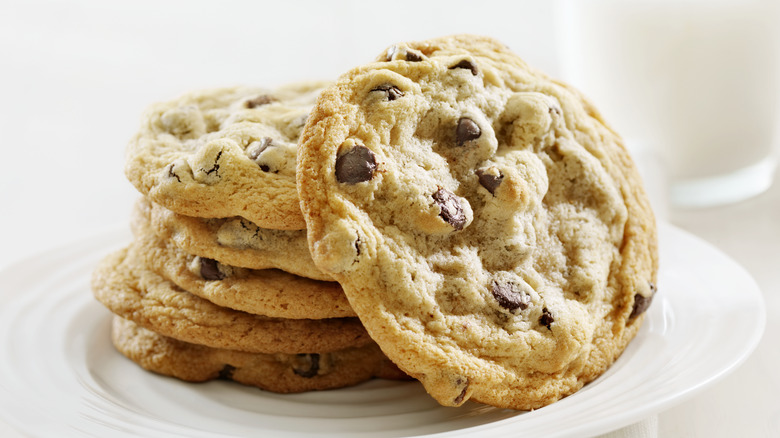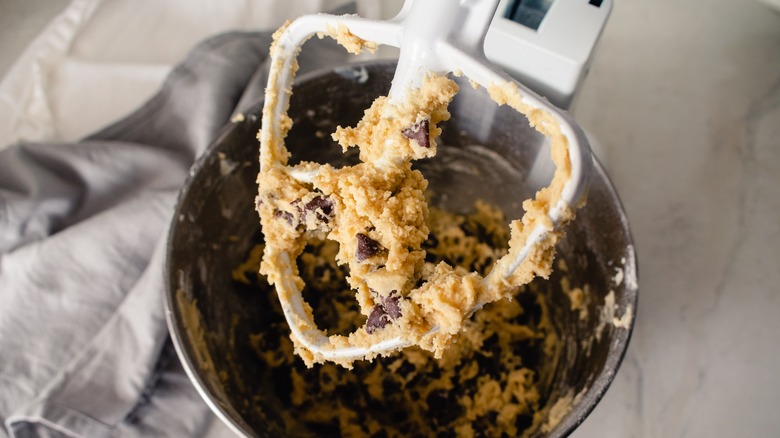What Happens If You Add Too Much Butter To Chocolate Chip Cookies
Creating the perfect chocolate chip cookie can feel more like an engineering project than a baking one. Success depends on exact ratios and precise techniques; and even though the result is as simple as a batch of cookies, when you're craving one, the stakes can feel just as high. These cookie mistakes run the gamut, from improperly portioning out your dough mounds to forgetting to preheat the oven. But one unexpected error bakers can make is adding too much of a good thing, butter.
Although butter generally makes it all better, bakers who go overboard with it are dooming their cookies to a greasy and crumbly texture. Classic signs of a cookie with too much butter include crispy-bordering-on-burnt edges, a greasy surface, an excessively brittle texture, and a predominantly buttery flavor that overpowers the other caramel and chocolate notes. An excessive amount of butter makes it where the flour is unable to absorb the combined fat, which causes the cookie to spread too widely and the sugar to carbonize more easily because it's surrounded by too buttery a dough.
So how can you avoid making this mistake in the future? It all begins with understanding the various ratios for flour, butter, and sugar in a cookie.
Breaking down the perfect butter ratio
Each type of cookie has a distinct ratio of butter, ensuring the perfect texture and flavor for each. A traditional cookie flour-butter-sugar ratio is 3 parts flour, 2 parts fat (or butter), and 1 part sugar. However, that formula is for your basic pale sugar cookie. According to Kenji Lopez-Alt of Serious Eats, a better ratio for the golden chocolate chip cookie is 1 part flour to 1 part sugar to 0.8 part butter. While rich, this ratio doesn't go as far as butter cookies and sablés, where the butter eclipses the sugar amount. Consider the texture of a sablé, the iconic French butter cookie, with its golden edges and melt-in-your-mouth texture. The word itself means "sandy," denoting the crumbly interior of a butter-rich cookie — but this is not what you want for your classic chocolate chip.
When shopping around for recipes, look at how much butter is being used in relation to the other ingredients, and keep in mind, the ratios are referring to the weight of each ingredient, not the volume measurement. If a recipe calls for roughly 2 cups (280 grams) of flour, 1¼ cups (280 grams) of sugar, and 1 cup (226 grams) of butter, you're still looking at the classic 1:1:0.8 ratio by weight. As long as you keep close to these numbers, you'll make a chocolate chip cookie with the perfect amount of butter.

